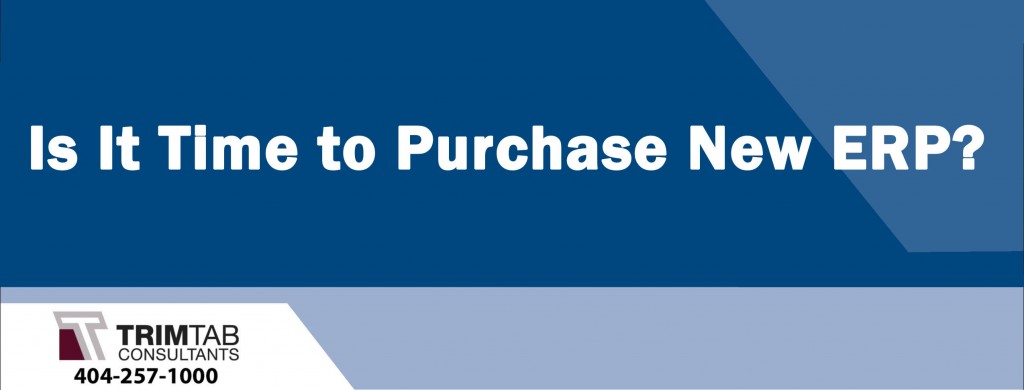HINT: It’s not brain surgery. Don’t wait until the patient is dying.
Whether you are contemplating a first time purchase for your entire company, expanding into a new territory currently not supported by Enterprise Resource Planning (ERP), or deciding whether to replace your existing ERP solution, it’s a big decision. For decades ERP implementation in general, and more specifically ERP replacement, has been compared to brain surgery. You just don’t do it unless the patient is dying. But today the better analogy is joint replacement. You suffer with that bum knee or hip until you can’t stand the pain any longer, or you simply can’t function properly. Apply these same principles to your next (or first) ERP purchase. Suffer along if the status quo is “good enough.” But what if it’s not? Sure there will be some “recovery” time required; plan for it. But with careful selection and planning and aggressive goal setting you too can be operating pain – free and better than ever by implementing a new ERP.
ERP IS LIKE BRAIN SURGERY…OR NOT
According to data collected for the Mint Jutras 2011 ERP Solution Study, 62% of businesses with ERP installed are running the first solution ever implemented in the company. Why? Because for years most people equate replacing ERP to brain surgery. You just don’t do it unless the patient is dying. “Rip and replace” was avoided at all cost, even when there was no possible way the existing solution or its underlying architecture could keep pace with new market drivers and changing business needs. Upgrades were viewed as difficult and painful but a reimplementation was often seen as pure evil. Yet if 62% are still running their first ever ERP, that means 38% have in fact bitten the bullet and replaced an ERP solution. This doesn’t necessarily mean a change in solution provider. A replacement could mean a newer or different product from the same vendor or it could mean opening the door for a competitive bid. Two out of three of our survey respondents that replaced their ERP also replaced their vendor. That means one in three stuck with the owner of their current ERP. That of course may not have been the same vendor they purchased it from. Given the massive consolidation of the ERP market over the past two decades, it is entirely possible the ownership of the intellectual property of your ERP solution has changed hands. However, this also provides additional choices for ERP solutions without the necessity of switching vendors. Your experience with that vendor will deter mine if that is viewed as a plus or not.
A BETTER ANALOGY
While the brain surgery analogy is catchy and dramatic, there actually might be a more appropriate comparison today, one that doesn’t presume a fatal prognosis. That better analogy is joint replacement. When do you replace a knee or a hip? While not a life – threatening situation, a replacement is precipitated when either the pain becomes unbearable or you can no longer do what you want or need to do. In other words, you can’t function properly. The same should apply to ERP. Replace it when the pain of outdated technology, hard to use software and/or missing features and functions becomes too great. Or when your current solution simply cannot support your business needs. There is of course a certain level of subjectivity in this type of decision, partly based on your tolerance for pain and partly based on your needs and desires. If you want to climb mountains or ski down them, you will be more inclined to replace that knee. But if all you want to do is sit on the couch and watch television, maybe not. After all, it provides you with the perfect excuse for not being active. If you have no plans to grow and no need to improve the performance of your business, then your current ERP may be just fine, even if it doesn’t perform well or produce world class business results. Just fine, that is, until your business or the market around you changes. But don’t let your current ERP, or lack of an ERP solution, become an excuse for poor performance or stagnation
